Campus Locations
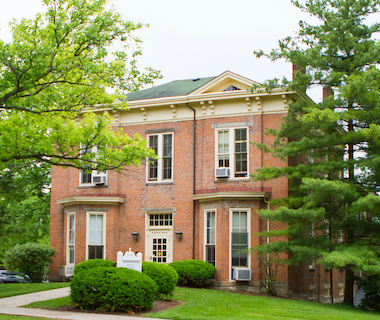
Miami Tribe Relations
Myaamia Center200 Bonham House
Oxford, OH 45056 strasskl@MiamiOH.edu 513-529-5648 Connect with Us
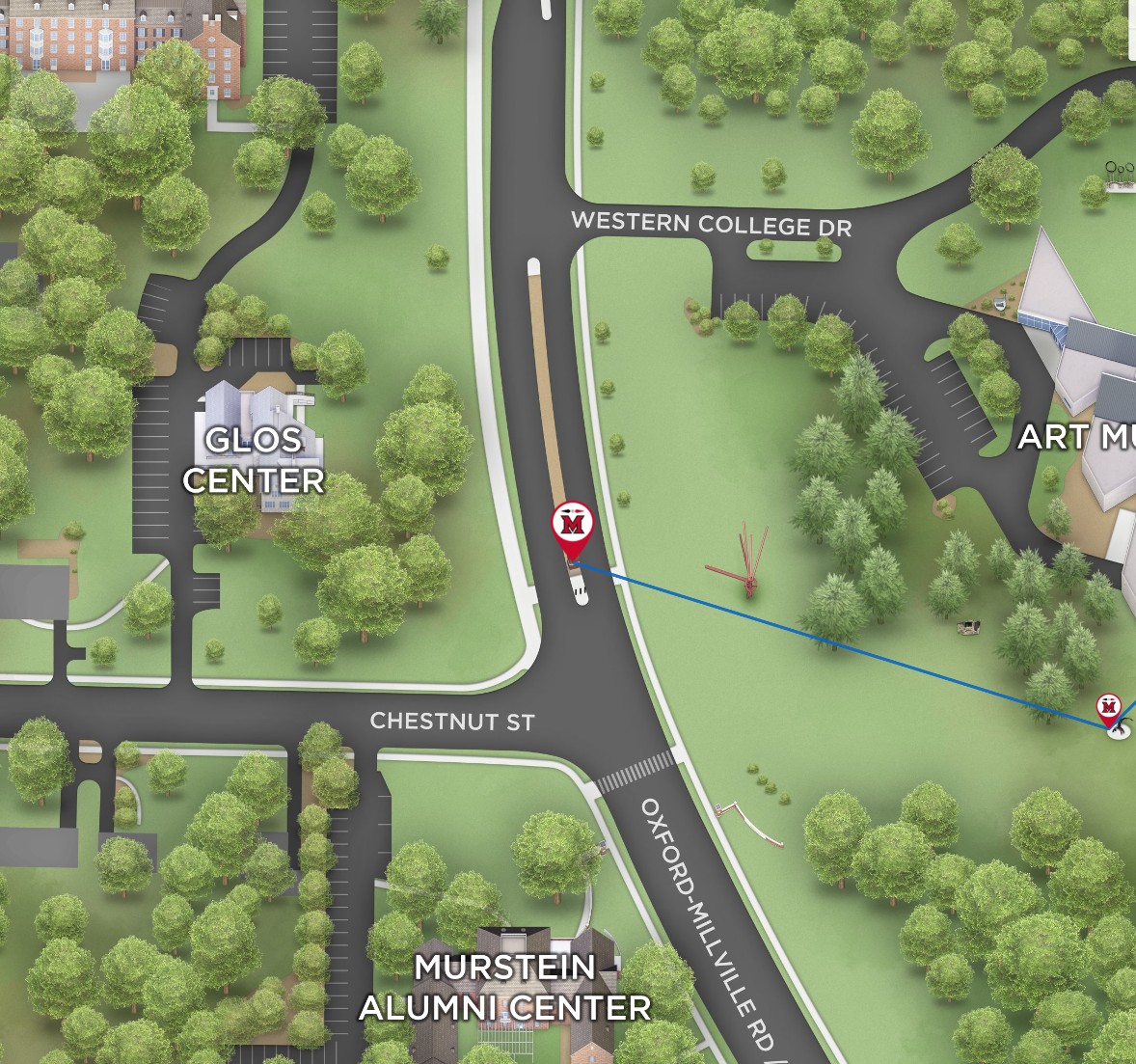
 The Myaamia Center is located in the Bonham House on Miami University's Oxford campus. The Center, a Miami Tribe of Oklahoma initiative located within an academic setting, serves the needs of the Myaamia people, Miami University, and partner communities through research, education, and outreach that promote Myaamia language, culture, knowledge, and values.
The Myaamia Center is located in the Bonham House on Miami University's Oxford campus. The Center, a Miami Tribe of Oklahoma initiative located within an academic setting, serves the needs of the Myaamia people, Miami University, and partner communities through research, education, and outreach that promote Myaamia language, culture, knowledge, and values.
The Wiikiaami Room is a gathering space located within the Armstrong Student Center, on the 2nd floor, that educates visitors about the Miami Tribe of Oklahoma.
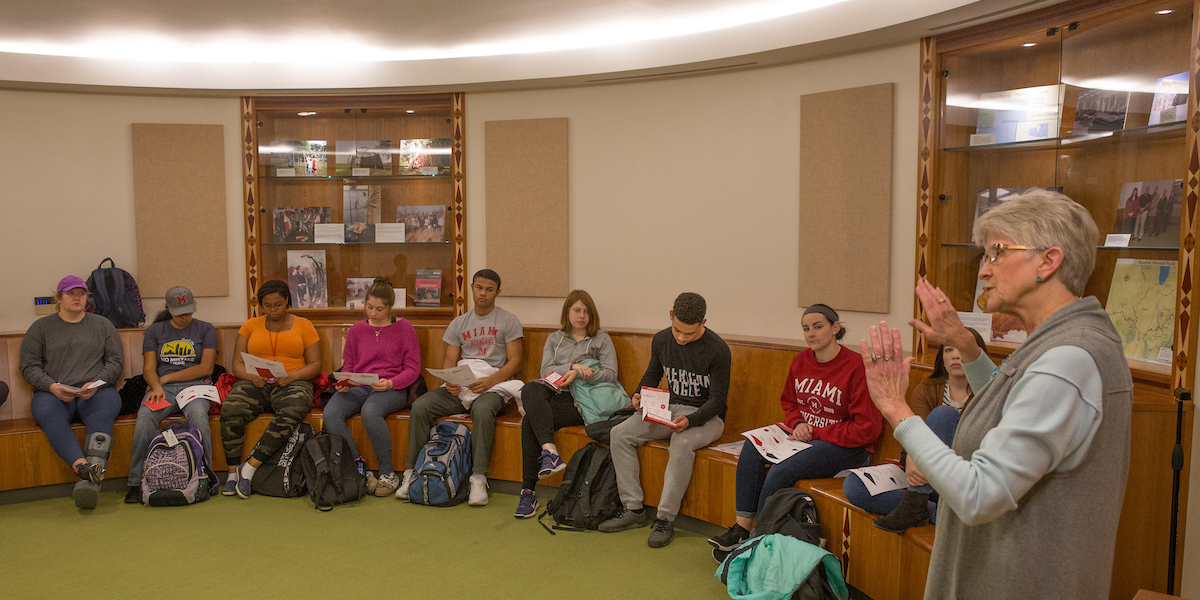
The design for the room originated with a 2009 Miami University architecture studio. It incorporates several elements of a wiikiaami, the Myaamia word for ‘home or lodge’, including the room’s round shape and an entrance from the East. The decorative wood inlay, created by Myaamia artist Jody Gamble, uses a Myaamia ribbonwork pattern. The inlay wood strips extend from the floor through the seating to mimic the poles that would traditionally make up the frame of a wiikiaami. The room’s display cases highlight Myaamia language, culture, and art and show multiple ways students engage with Miami Tribe activities.
The Shade Family Room is a celebration of Miami University's history and traditions. Different themes are represented on each of the eight-wall columns around the room.
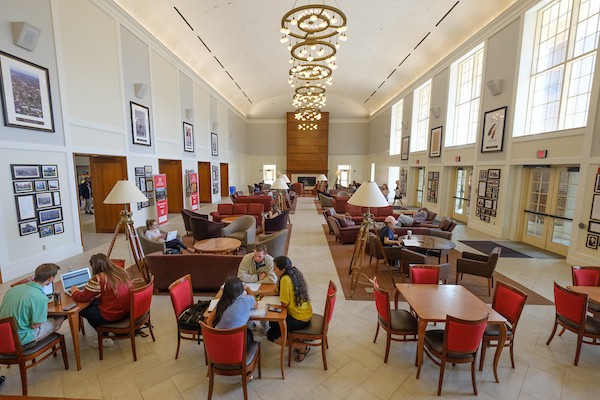
One column is devoted to the relationship between Miami University and the Miami Tribe of Oklahoma. Focusing on the phrase neepwaantiinki, or "learning from each other," several photos and accompanying text show leaders, students, and faculty who have played an integral part in the development of this relationship since it began in 1972.
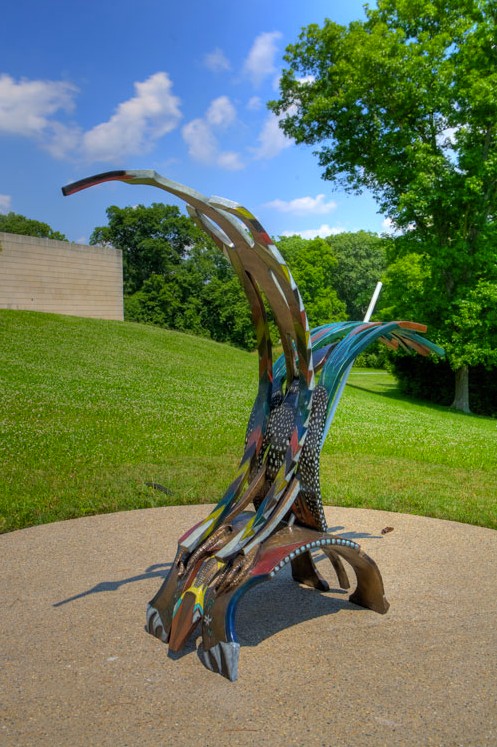 Artist Eugene Brown’s A Tribe Named Miami, A Surveyor’s Stake, A Town Named Oxford, is a cast bronze sculpture located in the Miami University Art Museum Sculpture Park. Installed in 2008, this sculpture aims to strengthen the relationship between Miami University and the Myaamia Tribe, an indigenous population of the region. As explained in the Miami University Sculpture Park Viewing Guide, the sculpture represents an intersection of Miami with the land it was built on, as well as a connector between the past, present and future. This initiative to revitalize the ties to Miami culture in 2008 is another branch in Miami’s ongoing initiative to more adequately honor its borrowed name.
Artist Eugene Brown’s A Tribe Named Miami, A Surveyor’s Stake, A Town Named Oxford, is a cast bronze sculpture located in the Miami University Art Museum Sculpture Park. Installed in 2008, this sculpture aims to strengthen the relationship between Miami University and the Myaamia Tribe, an indigenous population of the region. As explained in the Miami University Sculpture Park Viewing Guide, the sculpture represents an intersection of Miami with the land it was built on, as well as a connector between the past, present and future. This initiative to revitalize the ties to Miami culture in 2008 is another branch in Miami’s ongoing initiative to more adequately honor its borrowed name.


501 E. High Street
Oxford, OH 45056
1601 University Blvd.
Hamilton, OH 45011
4200 N. University Blvd.
Middletown, OH 45042
7847 VOA Park Dr.
(Corner of VOA Park Dr. and Cox Rd.)
West Chester, OH 45069
Chateau de Differdange
1, Impasse du Chateau, L-4524 Differdange
Grand Duchy of Luxembourg
217-222 MacMillan Hall
501 E. Spring St.
Oxford, OH 45056, USA
Mosler Hall 316
1601 University Blvd.
Hamilton, OH 45011